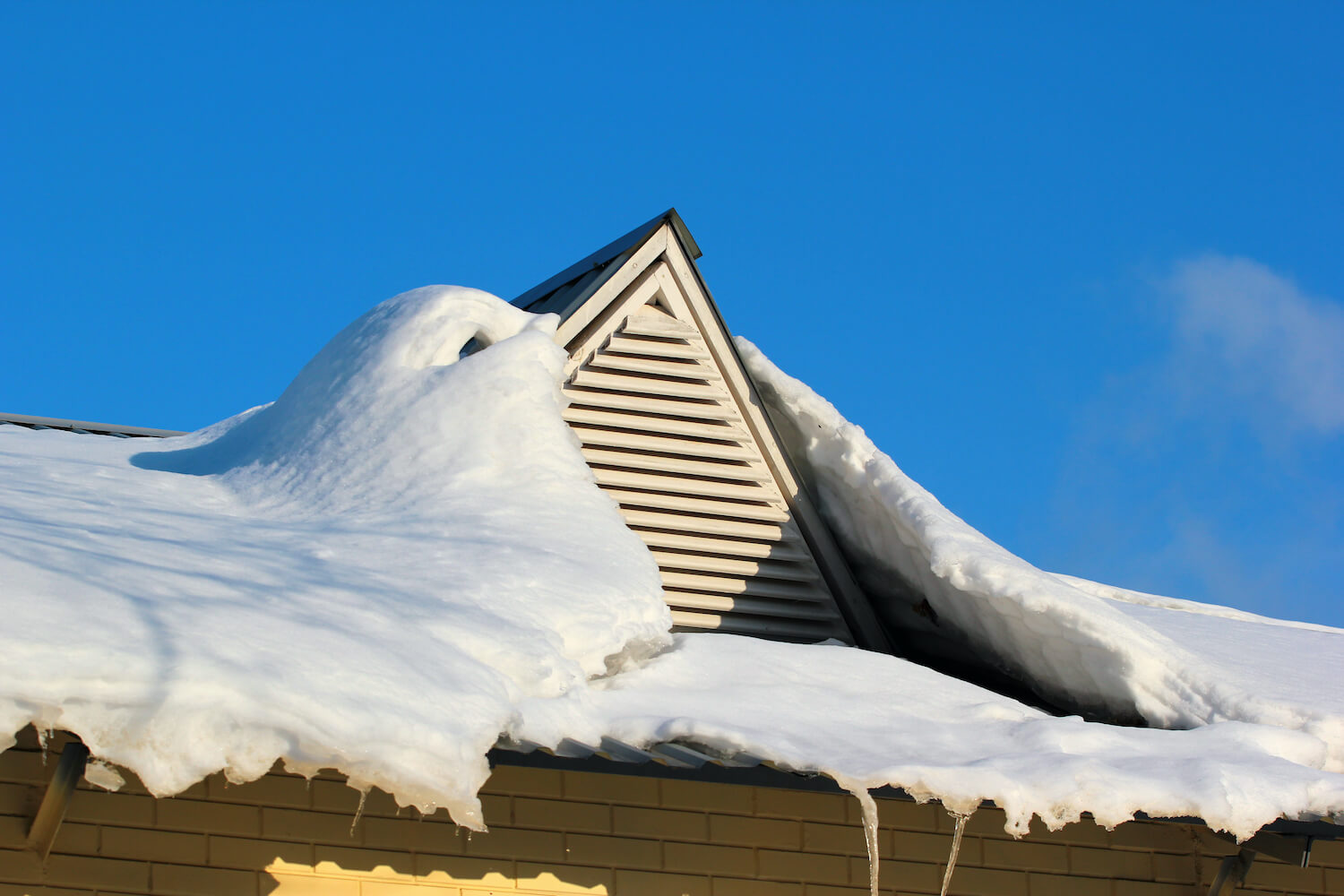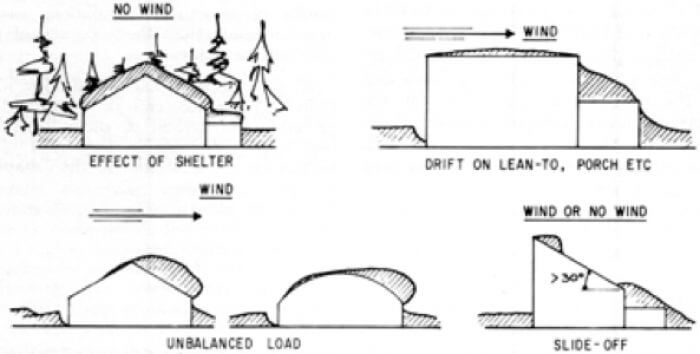By Carla Ladner, P.Eng.

Each winter, during periods of significant snowfall, the buildup of snow on roofs can be a real concern.
Snow accumulation depends on many factors, including wind direction, building orientation, roof pitch, shelter, and, of course, weather conditions. For example, houses are more at risk when the wind is blowing from the west and the lower side of the house is to the east. Trees and outdoor buildings also play a vital role in the snow that accumulates on the roofs.
Most houses and buildings are built to withstand Canada’s harsh winters, but some roofs are more likely to collapse than others: roofs at different altitudes (i.e. slopes, storey and a half), and flat roofs with projections (air units, exhaust stacks).

Complete collapses occur more frequently in older buildings, farm buildings and cottages, as well as in some community buildings, such as arenas built with minimal funds and without professional supervision. However, partial failures can also happen, and occur quite frequently in roof areas where high loads of drifting snow accumulate (i.e. porches, awnings and slopes).
Other factors, as non-compliance with building code requirements, construction or maintenance issues, lack of inspection and weight and load distribution may also cause the roof of an older building to collapse due to snow accumulation. The weight of the snow can be unevenly distributed, with concentrated snow accumulation in a particular area, which can create increased snow load on some parts of the roof. The slope of the roof (3/12 pitch or less) can affect the buildup, as snow is less likely to slide on flatter roofs. Improper modifications may also contribute to roof collapse due to snow (i.e. insulation without adequate roof ventilation, roof repair on three or more layers of shingles, modifications resulting in lower load tolerance of the roof and inadequate maintenance). Drifting snow can accumulate against roof protrusions or uneven roof lines, such as roofing equipment or walls between roof levels (which increases the load on the roof in a particular area). In addition, rain falling on accumulated snow will increase its weight, the snow becoming denser and heavier. With more ice buildup, our roofs become even more loaded.
When a roof collapses, homeowners must be concerned about the heat within the building. To be safe, make sure water is turned off, including the sprinkler system. A temporary heating system may be required to protect the foundation from freezing. If the roof has partially collapsed, it is imperative that the remaining roof structure be temporarily shored or demolished.
In order to determine the extent of damage to the content and equipment, the services of a technical expert may be required to ensure that the remaining structure of the building (roof, walls, floor framing and / or foundation) has not been structurally compromised, and to determine whether the building is safe to enter and retrieve the remaining equipment and content.
If you have any questions or would like to learn more about this topic, please contact our Structural and Civil Engineering team at 877 686-0240 or info@cep-experts.ca
